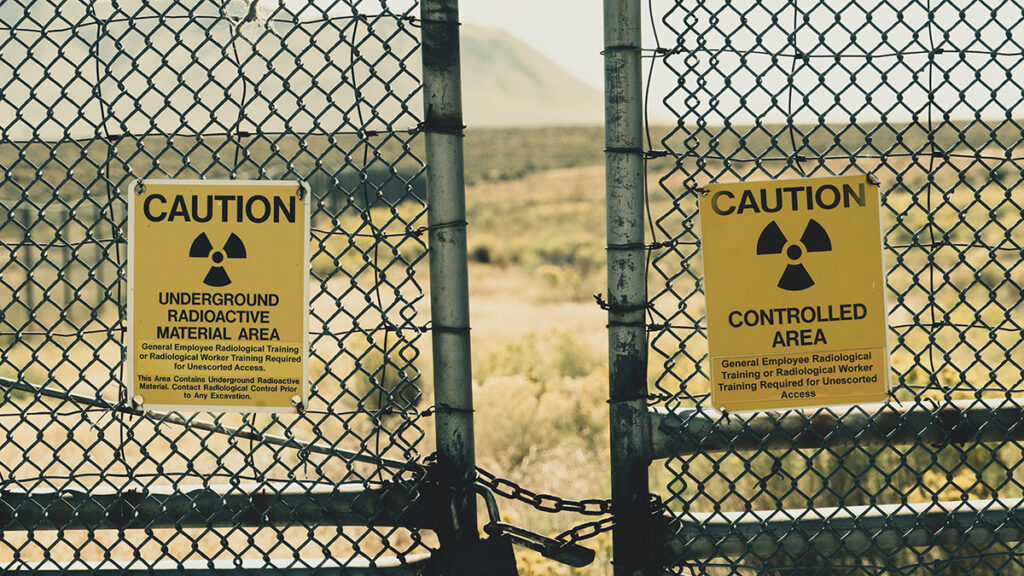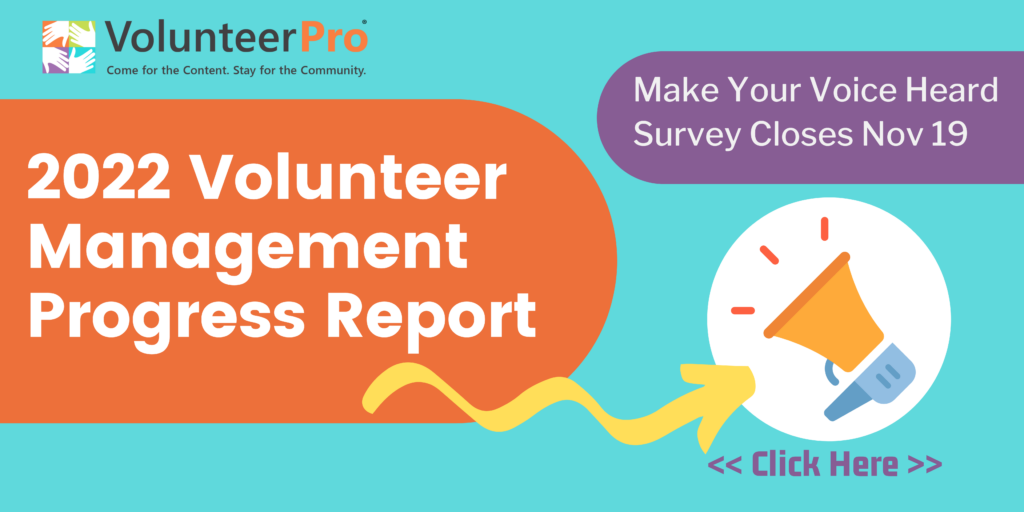 Why You Need to Create a Wellness Program for Volunteers
Why You Need to Create a Wellness Program for Volunteers
Lately, I have been kicking around a new idea to support volunteer engagement efforts – Why not integrate a volunteer workplace wellness program into our volunteer recognition and retention strategies? After all, if we are asking more and more of our volunteers, shouldn’t the level of our support be enhanced as well?
Can a business case be made for investing in volunteer wellness? Let’s take a look…
What Is a Wellness Program?
According to the Society for Human Resource Management (SHRM), 75% of employers now offer employee wellness programs to their paid staff. Traditionally, these programs have included perks such as flu shots, smoking cessation, preventive health education, fitness center memberships, weight loss programs, health fairs, and stress reduction programs to name a few.
Although many of these activities may not be appropriate for volunteer programs (since most don’t offer health coverage to volunteers), the intent of a wellness program focused on volunteers is much the same – to support the health, safety, and well being of those who help our organizations realize their missions.
What Are the Benefits of Wellness Programs?
Employers have recognized the value of employee wellness programs as strategies to reduce health care costs. Many studies have pointed to the significant return on investment (ROI) of these initiatives (for an in-depth US Department of Labor study click here).
Aside from reducing the costs of insurance premiums covered by employers, and a decrease in absences related to illness, some employers have also noted the positive effects wellness programs have on employee morale, motivation, and productivity.
How Can a Wellness Program Lead to Increased Volunteer Engagement?
There may be real benefits for volunteer programs, too. By promoting the well-being of volunteers through a well-designed program, we may be able to better support their ability to make a difference and thus impact their satisfaction, enthusiasm, and depth of involvement.
Here are some possible results of such an initiative:
- A purposefully designed program may demonstrate to volunteers that they are valued and trusted members of the team, even more than traditional volunteer recognition activities.
- Offering a wellness program as a perk may make some volunteer opportunities more appealing than others.
- Because most wellness programs include group activities or education, they present a unique opportunity for volunteers to socialize, have fun, and better manage stress.
- In addition, the social nature of many wellness activities build peer relationships that may result in greater shared accountability and higher team productivity.
- The aspirational aspects of wellness programs (as they often seek to promote positive behavioral changes) directly align with the inherent nature of volunteerism as a way to improve oneself, one’s community, and society as a whole and thus may support higher personal satisfaction with their volunteer role.
- Achievement and personal growth also feeds upon itself, promoting higher levels of self-confidence which may result in increased wiliness to undertake new challenges and even team leadership responsibilities.
Why Focus on Volunteer Health and Well-being?
Although science has yet to demonstrate a correlation between volunteer wellness promotion and program outcomes, we have anecdotal evidence that speaks to the unique challenges today’s volunteers face. These barriers might be addressed through a wellness program explicitly designed to address these issues.
We know that some volunteers – particularly those who provide direct services – are unprepared for the reality of their roles. For example:
- Some volunteers suffer from burn-out because they are not prepared for the stress of working directly with clients in crisis, and/or do not know how to maintain appropriate professional boundaries with those they serve.
- Volunteers who have little experience with the charitable sector sometimes struggle with the slow pace of change or lack of readily available resources.
- Still others experience a kind of “culture shock” as they immerse themselves in new communities and new contexts.
- Others may become demoralized with their inability to find ready solutions to some of our society’s most persistent problems.
- Some are frustrated by what they perceive as pointless reporting, paperwork, and grant requirements for the projects with which they are involved.
The increased stress of new challenges, coupled with the disappointment of unmet expectations, can create an environment that can foster dissatisfaction in a volunteer corps (for more on volunteer expectations, see my earlier post). A volunteer wellness program might be a savvy preventive measure as well as an antidote to current volunteer discontent.
Getting a Volunteer Wellness Program Off the Ground
Because the relationship of volunteers to their host organization is different than that of employer to employee, it makes sense that at least some of the components of a volunteer program are different than its more traditional private-sector counterpart.
One easy way to integrate volunteer wellness into your program is to collaborate with your existing employee-based program (or that of a corporate partner or funder) and make some of their offerings available to volunteers. Another is to develop your program internally, with a volunteer leadership team guiding the way. Below are a few ideas to get the ball rolling.
12 Low-cost or Free Ideas to Support Healthy Volunteers
- Start each meeting off with two minutes of silent mindfulness meditation, focusing on the breath.
- Appoint a qualified staff person – with counseling, coaching, or social work experience – to be a volunteer ombudsman and support person who is available to debrief difficult situations and interactions the volunteer has experienced.
- Serve healthy, nutritious snacks during volunteer meetings and training instead of cookies, candy, and donuts.
- Encourage volunteers to journal and reflect on three things they are grateful for each day; then, regularly ask them to share their gratitudes at each meeting or online through a community chat.
- Provide in-service training on how to maintain professional boundaries with clients, along with with case studies for practice.
- Provide free or discounted first aid and CPR training for volunteers.
- Recruit a qualified volunteer to offer on-site yoga classes to fellow volunteers.
- Invite the local Health Department to speak on preventing the spread of communicable diseases.
- Have your organization’s safety coordinator train all volunteers on your emergency preparedness/natural disaster safety plan.
- Provide diversity training for all volunteers to increase their cultural competency.
- Encourage volunteers to attend local health fairs as a group outing.
- Include volunteers in annual screenings and immunizations provided to employees free of charge.
Consider Your Organization’s Work Environment

While nonprofits are typically viewed as places of hope and healing, there are still toxic environments and/or people who might have an impact on volunteer wellness.
Consider some of these resources to determine if your workplace is toxic AND what you can do about it.
Everyone has a bad day, week, or even month. However, when toxicity and negativity are so engrained in someone’s personality, it can start to impact nearly every facet of work and life in everyone else they encounter.
And this toxicity is not just limited to people. Workplaces can be toxic too. So, what do you do as a leader of volunteers if you think your organization and/or colleagues are toxic?
Read on for some helpful insights to learn how to identify and overcome toxic traits. Your volunteer leadership skills depend on this knowledge!
Is Your Workplace Toxic? – Business Insider
If you have to ask this questions, it’s likely that your organization is toxic. However, it could just be a phase or general work stress.
Not sure how to tell the difference?
Check out this Business Insider article to learn some subtle traits of toxic workplaces.
When Your Colleagues (or, *gasp*, your volunteers) are Toxic – Fairy God Boss
Did you know that there are different types of toxic people?
Well, now you do!
As it this topic wasn’t delicate enough, if you think you are dealing with toxic people at work, you now have the added challenge of figuring out what kind of toxic they are so you can develop strategies to cope or overcome the challenges that will arise.
Read this article by Fairy God Boss to learn about 6 toxic people you might encounter at work and what you can do about them.
When Toxic Behaviors Affect Your Organization – Inc.
You how when you throw a rock into a still pond you see ripples? That’s exactly what it’s like when there are toxic behaviors running rampant in a workplace. The ripple effects extend past employee performance and materialize in personal lives and mental health.
Don’t let your organization fall victim to toxicity.
Learn about how toxic cultures will impact an organization’s bottom line in this Inc. article and employ some leadership strategies to help mitigate the risks.
Feeling Brave? Find Out if YOU are a Toxic Person – MindBodyGreen
Here’s the thing about toxic people, usually they don’t know that they are toxic! Or life circumstances turn a usually positive and helpful person into someone no one wants to be around.
Don’t let that happen to you!
If you are at all concerned that you are a toxic person, or might be harboring a toxic trait or two, read this article to find out. If you find yourself relating to some of the traits, have no fear. In that same article you will learn some tactics to overcome any toxic behaviors.
How to Address and Overcome Toxicity in Your Life – The Muse
Even if after you discover that your workplace and/or colleagues are toxic, but you still want to stick around, (hey, we get it! Your work matters and is likely very important to you on a personal level.), you are going to need some help getting by.
There are some techniques that can help you reduce the affects of working in a toxic environment.
Read this The Muse article to learn 4 strategies to employ that can help you relieve some of that stress.
Team Still Stressed? Try Gratitude Leadership!
Nonprofit staff must meet incredible demands. Our work, though often maligned as less than the outputs of private industry, is not for the faint of heart. We must juggle the priorities of multiple constituencies. We must squeeze results out of every drop of meager resources we are afforded. We must cope with the crises, both small and large, of the people we serve. We must keep our chins up and lead even when things are at their worst. And, we must continue to hope for the changes we wish to see in the world.
It’s a tall order and it’s so easy to get burnt out and frustrated. But, there’s an upside — you have the power to change your point of view.
If you install a volunteer wellness program in your organization and you or your team is still feel down, try gratitude leadership. Make a list of what you are thankful for. Then, make that list your personal mantra. Bring it up any time you find yourself slipping into old thought patterns.
By turning things on their head, you’ll be amazed at what happens. Resistance will be transformed into resilience, and you’ll begin to see new opportunities for yourself and your team. You’ll see your morale go from low to light overnight. It may sound corny, but give it a try.
It really does work.
What Would You Add to This List?
If you were developing a Volunteer Wellness Program, what activities would you include? Please share your ideas and comments!
PS: Check out an episode of the Time + Talent podcast, in which I discuss volunteer wellness with Jennifer Bennett of VolunteerMatch and Megan Vixie, from Beach Cities Health District.
Leaders like you have exhibited phenomenal spirit and dedication in 2021. And we want to ensure that your voices and experiences are heard.
In this survey we will explore the impacts of COVID on both you and your organization over the past year. We appreciation your participation.
Your answers will be anonymous and the survey takes LESS THAN 5 MINUTES to complete. At the end of the survey, you will be able to register for a free Sneak Peek Webinar where we will share the early results exclusively with participants before the general public.








Leave A Comment